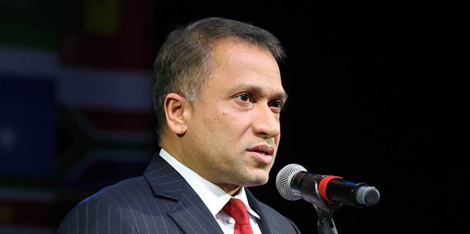Opinions & Interviews
UNDP: Environmental projects in Belarus yield tangible results

MINSK, 24 November (BelTA) - Environmental projects in Belarus yield tangible results. It is as important to disseminate best practices to other territories, UN Resident Coordinator/UNDP Resident Representative in Belarus Sanaka Samarasinha said at the final training seminar of the project ClimaEast: Conservation and sustainable management of peatlands in Belarus to minimize carbon emissions and help ecosystems to adapt to the climate change on 24 November, BelTA has learned.
The project implemented in the reserves Zvanets and Sporovsky helped restore almost 4,000 hectares of wetlands, greatly increase the population of Aquatic Warbler listed in the Red List of Endangered Species of Belarus, reduce the number of fires in ecosystems and carbon emissions into the atmosphere.
“This experience can easily be extended to other areas. We need to go this way to save other peatlands for the sake of future generations,” Sanaka Samarasinha believes.
Local residents show interest in such initiatives as they mean new jobs and enhance the value of the area. “The preservation of peatlands is not only a matter of economy or ecology. This also includes a social dimension. The focus should be placed on these points. The information campaign should disseminate knowledge on the advantages of preserving ecosystems and their biological diversity,” UN/UNDP Resident Representative in Belarus.
He stressed that economic performance is also an important indicator in the achievement of the Sustainable Development Goals.
The four-year project demonstrated a comprehensive approach to the sustainable management of lowlands in the nature reserves Zvanets and Sporovsky. Infrastructure has been developed to use biomass in power engineering, construction and agriculture. Special equipment has been acquired for cutting and collecting reeds, grass and trees. A total of 3,893 hectares in pilot areas were cleared of vegetation; 33 jobs were created. All equipment has been transferred into the ownership of the Sporovsky reserve. Harvested wood and shrubby wood chips are used as biofuel, partly replacing fossil hydrocarbon raw materials which are one of the major sources of greenhouse gas emissions.







 print version
print version make home page
make home page add to bookmarks
add to bookmarks

